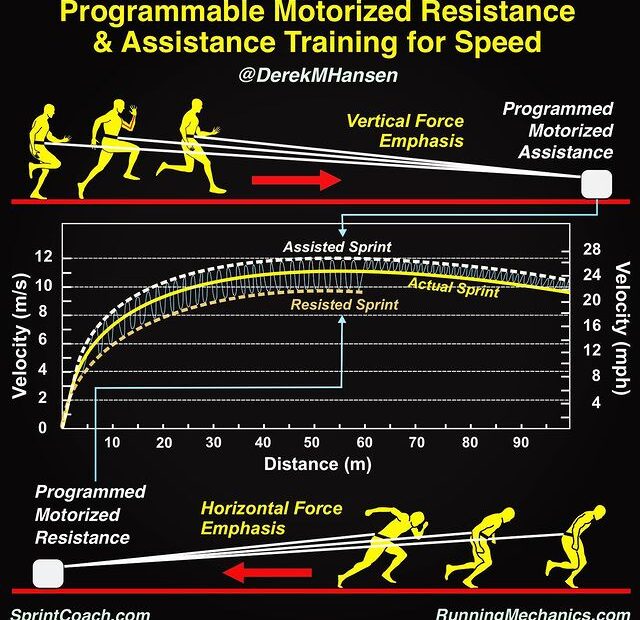Horizontal Force Emphasis Vs Vertical Force Emphasis
Although there may not have been many recent innovations in the way people coach sprinting, there has been an ongoing effort to develop better technologies to aid in making athletes run faster. One of the more recent innovations that we have seen make it’s way amongst the college and professional ranks is the use of “Programmable Motorized Resistance & Assistance” devices.
These devices are tethered to an athlete and can provide smooth and precise resistance during and acceleration, or can be used to provide manageable over-speed assistance for higher speed efforts. The idea in both cases is to generate adaptations for power and speed that can transfer to the actual sprint performance of an athlete. Both resistance and assistance can be variably modulated during a sprint effort.
The key to providing the best results is identifying an optimal load for different stages of the acceleration spectrum, as well as pinpointing the best level of assistance that does not interfere with proper mechanics. An experience coach also understands the progression and frequency of use for these devices, as well as the proper cueing to ensure optimal mechanics during training with these devices.
While all of us want to have an easy ‘plug-and-play’ experience with technology, the best results will come from proper planning and implemenation of sound training programs, as well as the ability to adjust on the fly and individualize training for the best results on a consistent basis over time.
I will be spending more time on identifying proper implementation of these types of technologies, as more and more of my clients are acquiring such devices. This includes testing and evaluation using this technology, as well as developing a sound workflow that yields the greatest returns in both off-season and in-season scenarios.
Assisted Trainining (Vertical Force Application )
Resistance Training (Horizontal Force Application )
Derek M Hansen RunningMechanics.com SprintCoach.com
